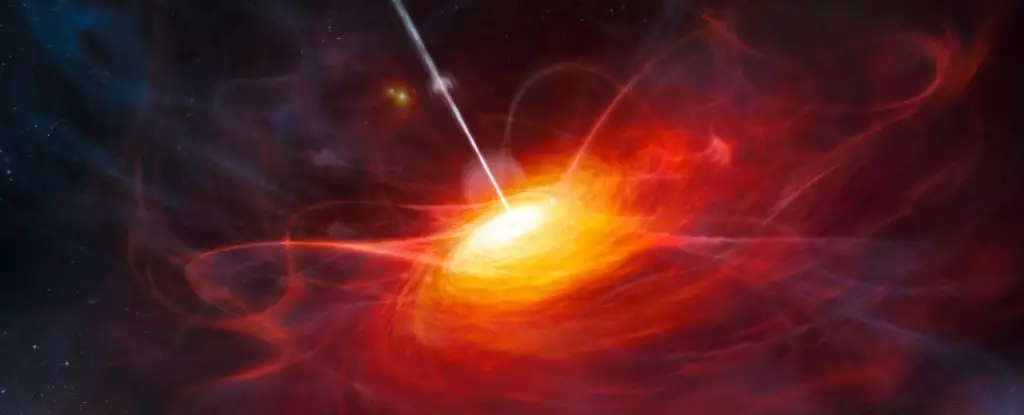In the vast expanses of the Universe, black holes hold a mysterious allure that defies conventional explanation. The recent discovery of a massive black hole at the Cosmic Dawn has left scientists scratching their heads in bewilderment. The enigmatic black hole, nestled within the galaxy J1120+0641, boasts a mass exceeding a billion Suns, a staggering figure that challenges our understanding of cosmological phenomena.
The perplexing aspect of this celestial anomaly lies in its timing. Emerging less than 770 million years after the Big Bang, the colossal black hole’s rapid growth presents a conundrum for researchers. While previous conjectures attempted to elucidate its origins, recent observations utilizing the James Webb Space Telescope (JWST) have debunked existing theories. Contrary to initial assumptions, J1120+0641 appears surprisingly conventional, leaving the door ajar for more exotic hypotheses regarding its astronomical mass.
Quasar galaxies, characterized by central supermassive black holes voraciously feeding on surrounding materials, pose a unique astronomical puzzle. The gravitational pull and friction near the black hole ignite bright emissions as gases and dust are consumed at an astonishing pace. However, the rate of consumption is limited by the Eddington limit, beyond which radiation pressure hinders further accretion. Nevertheless, black holes can momentarily surpass this threshold in a super-Eddington accretion phase, guzzling copious amounts of material in a fleeting frenzy.
To discern signs of super-Eddington accretion, astronomers required high-resolution data provided by the JWST to analyze the galaxy’s luminosity accurately. In early 2023, a team led by astronomer Sarah Bosman meticulously examined the light from J1120+0641, unveiling a massive dust torus and a luminous disk funneling materials into the black hole. Contrary to expectations, the black hole’s feeding behavior mirrors that of contemporary quasar galaxies, dispelling theories of abnormal accretion mechanisms.
The newfound revelations surrounding J1120+0641 paints a picture of cosmic normalcy rather than extraordinary phenomena. The absence of excessive dust implies that the black hole operates within expected parameters, devoid of high-speed consumption patterns. As Bosman aptly summarizes, early quasars exhibit remarkable uniformity across different epochs of the Universe, obfuscating attempts to attribute their growth to super-Eddington accretion.
As the enigma deepens, the prevailing hypothesis posits that these colossal black holes originated from massive ‘seeds’ rather than incremental stellar evolution. These ‘seeds,’ potentially clumps of matter or exceptionally large stars hundreds of thousands of times the Sun’s mass, kickstarted the black holes’ development. This alternative theory gains credence as more gargantuan black holes surface from the cosmic mist, providing a compelling explanation for the Universe’s mysterious genesis.
The unveiling of an astronomical enigma at the Cosmic Dawn underscores the boundless mysteries awaiting discovery in the cosmos. As scientists probe deeper into the Cosmos, the veil of the unknown gradually lifts, revealing tantalizing clues that challenge our perceptions of the universe’s dawn. Amidst the celestial abyss, the riddle of J1120+0641 stands as a testament to the inscrutable nature of black holes, beckoning us to unravel their enigmatic secrets.


Leave a Reply